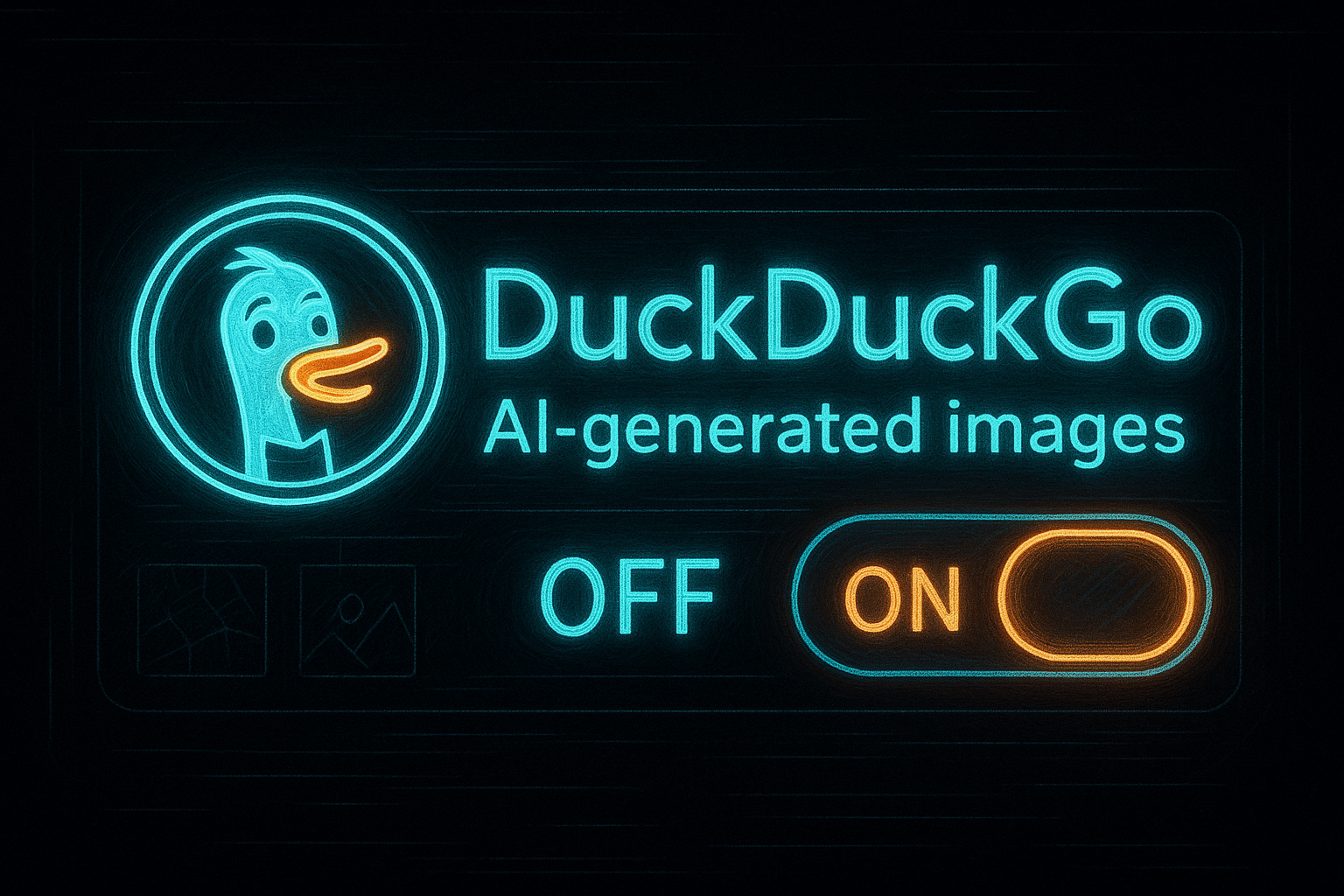DuckDuckGo Just Let You Mute the Machines—Here's Why That Matters
Super Simple Summary
DuckDuckGo has introduced a new setting that lets users hide AI-generated images from search results. This feature gives people more control over what they see online and supports growing awareness around AI-generated content. In this post, I explore what this change means for creators, educators, and everyday users—and why it’s a small but important step toward AI literacy.
What if you could filter out AI-generated content with the flip of a switch? DuckDuckGo just made that a reality.

A New Setting for a New Era
DuckDuckGo, the privacy-focused search engine, just rolled out a small feature with big implications: users can now hide AI-generated images from their image search results.
With one toggle, you can filter out pictures created by tools like DALL·E, Midjourney, or Stability AI and stick to real-world photos, art, and graphics made by actual humans. It’s a subtle but significant shift in how we interact with the internet—and what we expect from it.
🔗 Official Announcement on X
📰 TechCrunch Coverage

Why Hide AI Images?
This might sound odd coming from an AI blog, but here’s the truth: sometimes, we need to know what’s real.
AI-generated images are incredible. I’ve used them to prototype logos, create space-themed art for the AI Voyager brand, and even explore sci-fi storytelling ideas. But when I’m searching for historical photos, scientific diagrams, or artistic references—I want to be sure I’m not looking at a synthetic remix of pixels.
DuckDuckGo’s new setting is a gentle reminder: not all content on the web is created equal. And sometimes, we need a choice.

The Bigger Picture: AI Literacy in Action
At AI Voyager, I’m all about making AI accessible, understandable, and meaningful. And part of that means helping people know when they’re looking at something made by a model vs. a human.
This new toggle supports what I call “AI literacy.” It helps casual users—and not just techies—become more aware of how generative tools are shaping what we see, share, and believe.
It’s not about rejecting AI. It’s about seeing clearly through it.
Why This Matters for Creators and Explorers
If you’re a creative, a teacher, or just someone trying to find authentic visual material, this tool is gold. It empowers you to:
- ✅ Verify sources more easily
- 🎨 Create mood boards without synthetic noise
- 🧑🏫 Teach students the difference between original art and AI art
- 🔍 Notice how your own perception of “what looks real” is evolving
And if you do want to explore AI art, you can simply switch the toggle back on.

Final Thoughts from the AI Voyager Deck
This feature might seem small, but it signals something bigger:
We’re entering an era where search engines aren’t just finding things—they’re filtering reality.
Whether you're building with AI, learning how it works, or just trying to keep your bearings in the digital sea, it’s tools like this that help us stay grounded.
So hats off to DuckDuckGo. Giving users this level of control is a step toward a more transparent, user-powered internet.
🔄 Try it yourself:
Go to DuckDuckGo Image Search and click the “AI-generated images” dropdown to test the new setting.
💬 What do you think? Should other platforms follow suit?
Reply @AIVoyager_nl—let’s talk AI filters and the future of search.
—
Until then, stay curious—and keep exploring.
– André Barnard, AI Explorer
Enjoyed the post? Share it!
Help others discover this content